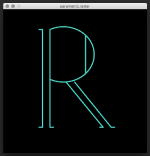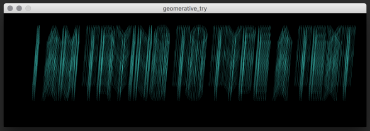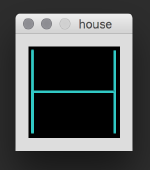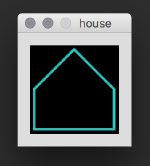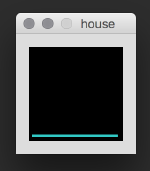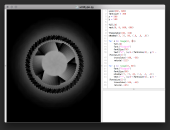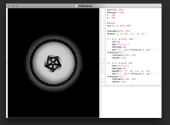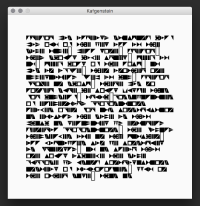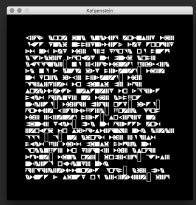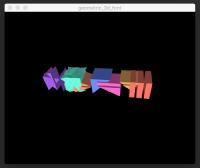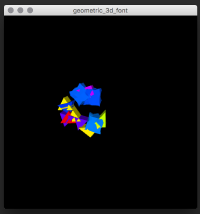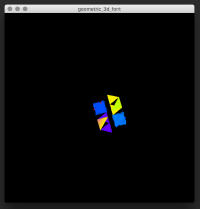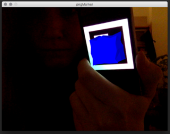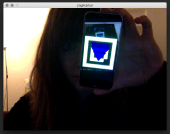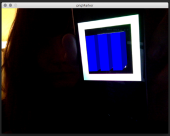This is the »Wild Type« page of — Jessica Hüttig
PARAMETRIC LETTER
For the first homework I created the capital letter R in Processing and named my variables
by the guidelines of the Anatomy of Typeface.
Code can be viewed on OpenProcessing.
TYPOGRAPHIC SYSTEM
Our task was to create a typographic system from scratch using the Fontastic library and export it as a TrueType-Font.
The characteristic of my font is inspired by the cross stitch and the zigzag stitch, therefore I named it Stitchfont.
I've used the X, /, \ to imitate a stitching pattern and converted my analogue sketch into code.
The lower-case letters are a bit thinner than the upper-case ones, but got the same shape.
TRANSFORM A FONT
For transforming the font we imported with the library Fontastic, we had to use Geomerative. I've decided to display the points of a letters
as strokes and triangles and dissort them on the y-axis. Finally we had to export the transformed font with Fontastic, but I didn't get it right.
Maybe I'll invest some more time soon, to fix this... Temporary code here.
ANIMATED LETTER
Simple H, animated with the Ani library, that turns into a house when you press the mouse
and will be destroyed when you press the key 'd'.
Code can be viewed on OpenProcessing
EXAMPLES CREATED WITH DRAWBOT
We had a nice workshop, where we had been introduced in DrawBot and RoboFont.
Our task was, to explore DrawBot and create a few designs by arranging glyphs or typography in an interesting way.
WRITING SYSTEM
Yay, just another geometric alphabet, that I created in RoboFont.
The idea was, to rotate every letter 90 degrees clockwise and to simplify them into filled geometric forms, like triangles and squares.
If the letter has a Counter, I tried to show this with a gap inside the geometric form or between two geometric forms of one letter.
I actually created only upper-case letters, but for the Kafgenstein-example in Processing, I used the same forms for the lower-case ones.
Otherwise you would only see the first character of a noun. Missing punctuation characters are unfortunately displayed as unfilled rectangles.
Take a look at the pretty pictures. ;)
for better resolution: File:Kafgenstein geometric.pdf
3D ALPHABET
A few glyphs of my geometric alphabet turned into 3D!
I modeled some glyphs in Blender to type »WILD TYPE« and displayed them in Processing using the PeasyCam-library.
I modified the basic-code, because in some way it didn't worked well for me. Code can be viewed on OpenProcessing.
OCR FONTS
Our task was to create a Glyph-Recognition App, that recognizes our grid-based created glyphs and provides us with visual feedback.
I used Photoshop for creating my letters and the NyARToolkit, especially the PNG-Marker example as a basis for my code, changed it a bit
and added some ambient light. If the camera recognizes a glyph, it displays the related letter from my 3D alphabet as visual feedback.
Take a look at the code.
